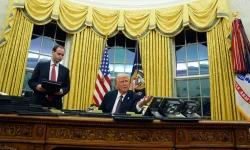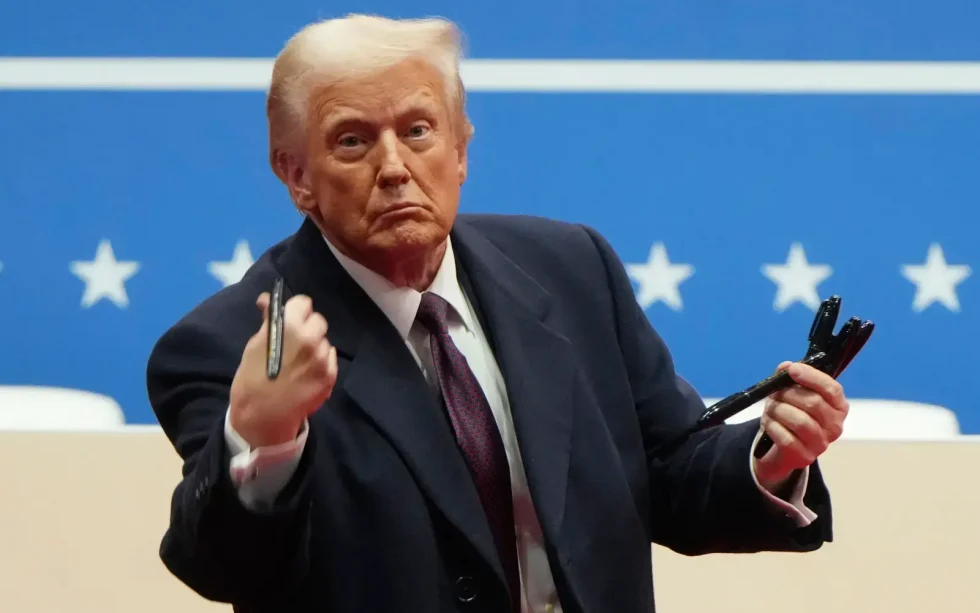
A shortened version of this article was published in Italian by the same author on 20 January 2025.
During the first 100 days of his previous administration, Donald Trump redefined the bare minimum level of approval a United States president could expect from the press. However, as his second term sets out, the circumstances appear remarkably different.
In the initial stages of his first term, the negative tone of news coverage about the Trump administration accounted for 80% of cases.
US newspapers and television networks blamed Trump’s positions on nearly every issue, from immigration and healthcare to presidential appointments and alleged Russian interference in the 2016 election. The only exception was the president’s economic policies, which split opinion among the press.
This trend was noted by Thomas Patterson, a professor at Harvard Kennedy School, in a study he published in May 2017.
Patterson examined the news coverage in the printed editions of three major US newspapers – The New York Times, The Wall Street Journal, and The Washington Post – as well as the flagship newscasts of four television networks, CBS Evening News, CNN‘s The Situation Room, Fox‘s Special Report, and NBC Nightly News.
Trump was not merely criticised. He also maintained a ubiquitous presence in newspapers and on television.
On national television, “the president typically accounts for roughly one-eighth of all news coverage” – 12.5% of airtime, the study indicates. With Trump, this figure soared to 41%.
Moreover, two out of three news reports focusing on the administration featured direct quotes from Trump himself, while statements from his spokesperson or party colleagues received only marginal coverage.
In 2017, Trump received an unprecedented level of attention and criticism.
Today, the situation may have evolved, and determining what the first 100 days of his second administration will entail is an increasingly complex challenge.
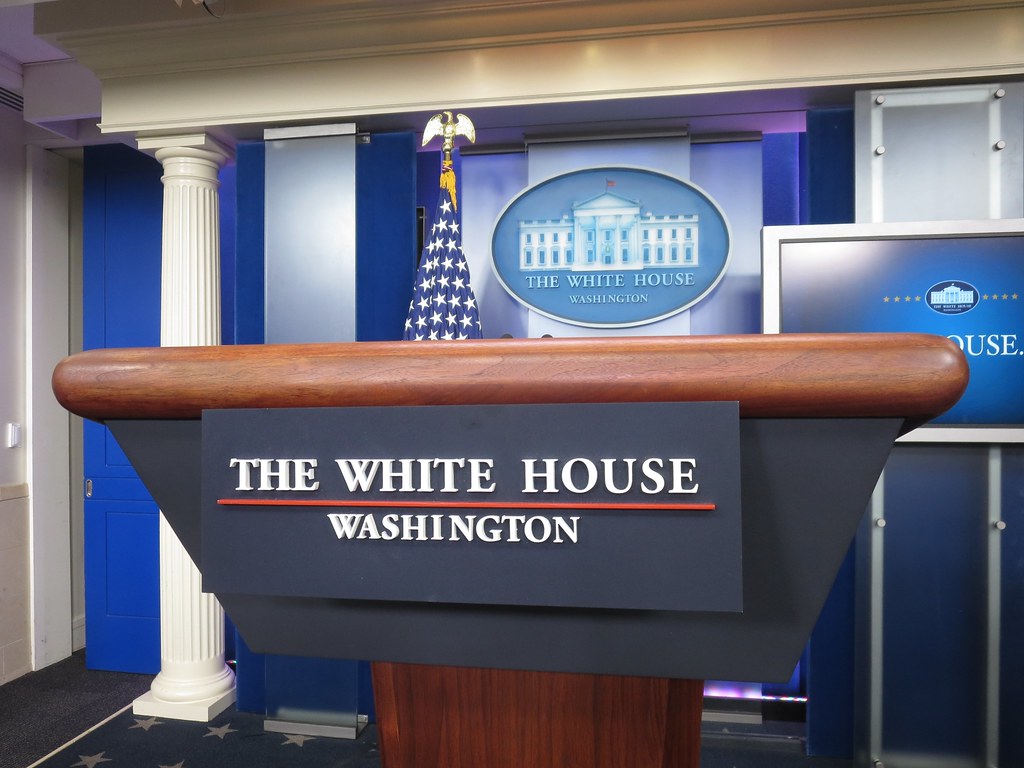
The James Brady press briefing room at the White House. Photo credit: Wikimedia Commons.
Enter the new
The counterbalance of the fourth estate is eroded by adverse conditions.
Trump’s disdain for the mainstream media may go beyond his usual bitter rhetoric, where it has become commonplace to hear him refer to the press as “the enemy of the people” or, more recently, “the enemy camp“.
What truly signals an alarming situation is the mix of growing weakness in traditional newsrooms and the simultaneous rise of alternative information channels, such as news influencers.
Many of these outlets have aligned themselves with Trump’s positions, a move echoed by leading social media platforms – particularly following Meta’s recent change of course.
The US president may exploit this juncture in various ways.
He could alter the composition of the James Brady Press Briefing Room at the White House. Trump may once again attempt – this time more systematically – to replace reporters from outlets he considers overly disapproving with more sympathetic podcasters and content creators.
Examples might include Joe Rogan, Charlie Kirk, and YouTubers such as the Nelk Boys. Whether they want to attend White House press meetings remains uncertain – they certainly don’t need to financially.
If the White House Correspondents’ Association – the organisation that ensures permanent seats for journalists from the 49 major national and international outlets in the press briefing room – were to obstruct Trump’s strategy, his administration might push to move conferences to a larger venue.
This, too, is not a new idea. Trump’s administration considered this option as early as 2017.
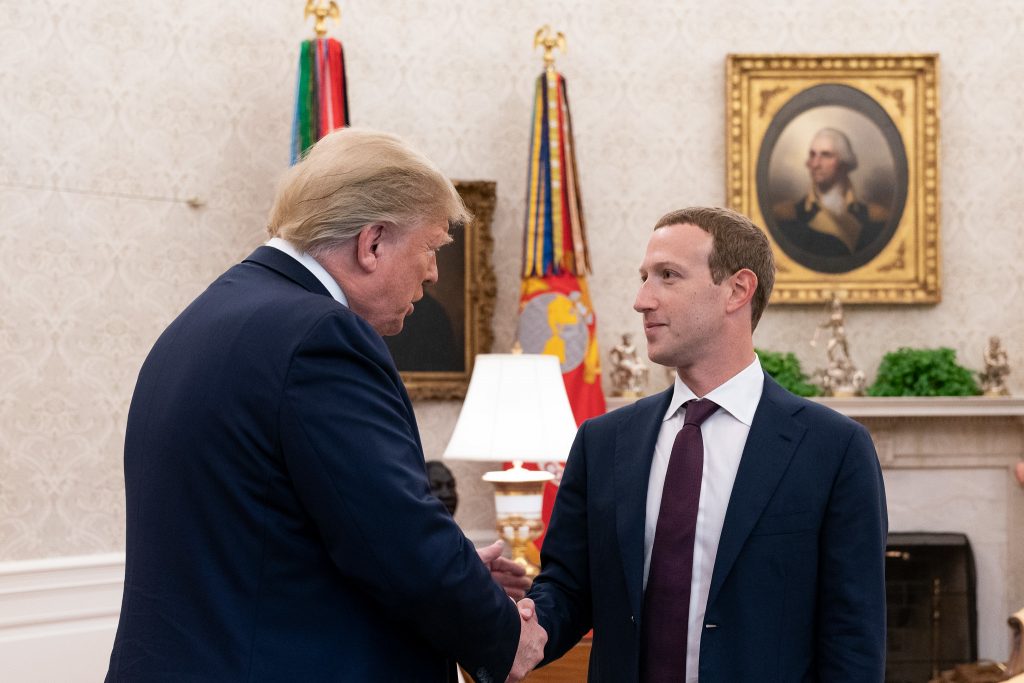
Donald Trump, the 47th president of the United States, and Mark Zuckerberg, CEO of Meta. Photo credit: Flickr.
The noisy majority
Besides the alternative media army serving the American right wing, Trump can now count on the more or less explicit backing of the social media tycoons.
Throughout the electoral campaign, Elon Musk ensured support both financially and through adjustments to X’s algorithms that amplified MAGA opinions while penalising liberal ones.
Meta’s CEO Mark Zuckerberg’s recent U-turn to embrace Trump’s curious interpretation of free speech as a stand against “federal censorship” marks another significant development.
The dismantling of Meta’s independent fact-checking programme across Facebook, Instagram, and now Threads will fuel the proliferation of deceptive content and conspiracy theories – many of which are often shared by far-right Trump supporters.
Once again, the mainstream media will bear the brunt. Their already declining credibility is likely to be further eroded by the spread of countless alternative truths.
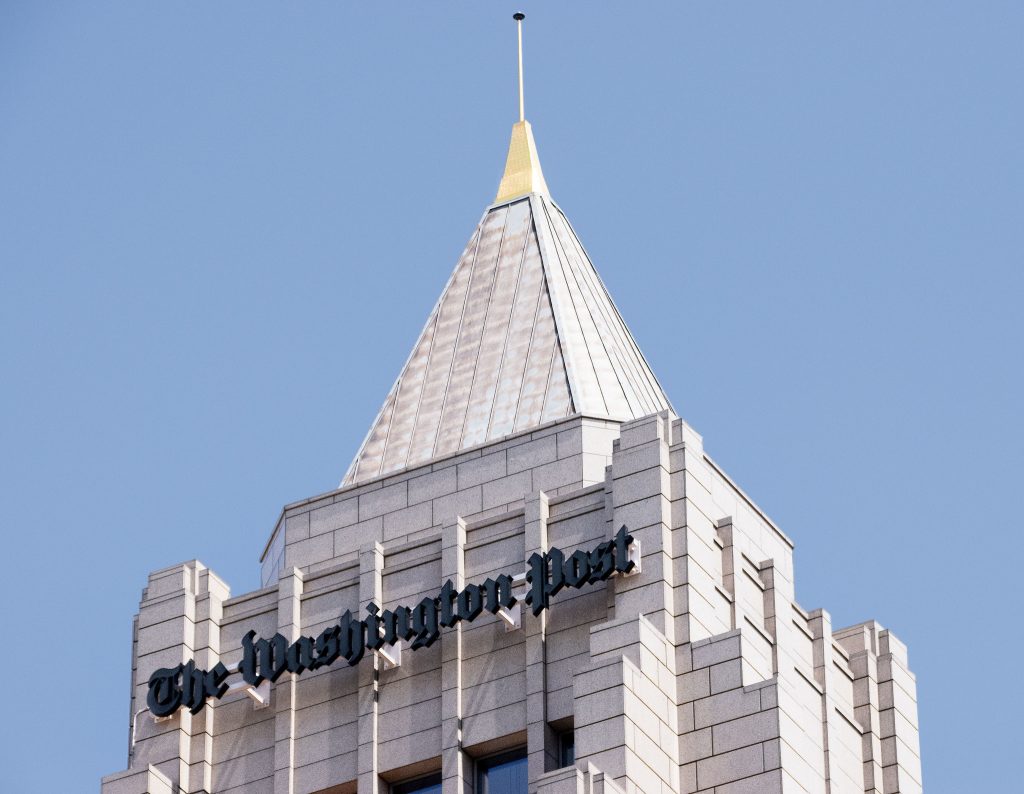
The Washington Post headquarters. Photo credit: Flickr.
Facing a struggling press
On the other side of the fence, editors are striving to defend the role of their newsrooms, which have been grappling with sudden leadership changes and significant ownership interference in editorial decisions.
Many publishers are eager to mend relations with Trump and avoid reigniting or escalating past conflicts during his second administration.
In the first 100 days of Trump’s first administration, government-related reports by The Washington Post and CNN were critical in 83% and 93% of cases, respectively.
In 2017, following Trump’s inauguration, The Post adopted its now-famous slogan, “Democracy Dies in Darkness,” emphasising its role as a watchdog.
Eight years later, coinciding with the Republican president’s return to office, the capital’s newspaper unveiled a new mission through its revised motto: “Riveting Storytelling for All of America.”
Over the past year, The Post has been experiencing an exodus of key talent and is struggling to appoint its new editor, partly due to the editorial decisions imposed by its owner, Jeff Bezos, and CEO, Will Lewis.
Bezos has ended the newspaper’s tradition of endorsing a presidential candidate – in this case, Democratic nominee and US Vice President Kamala Harris.
The Los Angeles Times faced a similar situation when its owner, Patrick Soon-Shiong, rejected the newsroom’s decision to endorse Harris and blocked the publication of an editorial critical of Trump’s presidential nominees.
Additionally, CNN executives asked Jim Acosta to move his show from 10 p.m. to midnight – Status reported – despite it being one of the network’s most successful programmes.
Acosta is also one of Trump’s most vocal critics within the organisation.
Mika Brzezinski and Joe Scarborough, co-hosts of Morning Joe on MSNBC, had a fluctuating relationship with Trump before his first election, which soured during his first administration.
Following Trump’s victory last November, they visited the president-elect at his Mar-a-Lago residence in Florida. “Joe and I realised it’s time to do something different,” Brzezinski stated. “That starts with not only talking about Donald Trump, but also talking with him,” to restore communication between the parties.
These are just a few examples of a broader readjustment process currently underway across various news outlets.
As The Associated Press‘s David Bauder recalled, The Wall Street Journal has appointed former Washington Post correspondent Damian Paletta as its Washington Coverage Chief. MSNBC president Rashida Jones is stepping down, C-SPAN has named former CNN executive Sam Feist as its CEO, and Politico has selected Jack Blanchard to lead its renowned White House-focused newsletter, Playbook.
Newspapers and television networks are striving to reinvent themselves to preserve their preeminent role in shaping public opinion. They are “not going to be the dominant player” anymore. They are “no longer going to shape the narrative,” Axios CEO Jim VandeHei told.
Major news outlets have lost their dominance over agenda setting and now face a lethal combination: their increasing fragility and the belligerency of the new government.
“Journalism’s job is to speak truth to power – even when it’s dangerous, especially when it’s dangerous. It requires courage – something media executives lack,” said Adam Penenberg, a journalism professor at New York University. “Instead, they began bowing to Trump 2.0 even before he took office. They seem fine with sacrificing integrity for profit and protection.”
Thinly veiled threats
The media’s submissive demeanour manifests in two ways.
On the one hand, newspapers are suffering from the declining support of social media platforms in driving external traffic to their websites.
Citing data from publisher analytics firm Chartbeat, Digiday reported that Google has stepped in to fill this gap, particularly with its Discover function, which in 2024 accounted for a quarter of the total external traffic to news outlets’ homepages.
This change is having a profound impact, as the Discover algorithm favours original and lighter content. As a result, newsrooms are being pushed to prioritise softer, less polarising topics.
Americans seem to want something other than politics – or, at least, that’s what Google suggests. Fewer criticisms of Trump, more lifestyle tips.
This algorithmically-driven disincentive couples with a classic Trumpian deterrent: the president’s penchant for suing the press and threatening to obstruct ongoing economic agreements – particularly mergers – between publishers.
Semafor highlighted the effects of such a strategy. CBS is urgently seeking a settlement with Trump after the president filed a $10 billion lawsuit for damages.
According to Trump’s lawyers, the network aired a cut version of the 60 Minutes interview with Kamala Harris, allegedly to portray her in a more favourable light.
Paramount, CBS‘s owner, wants to reconcile with the administration as it finalises its merger with David Ellison’s company, Skydance.
The management of both companies recognises that the government could tighten the merger review process by leveraging Brendan Carr, the incoming chairman of the Federal Communications Commission.
It’s not the first time Trump has employed such tactics. Similar challenges arose for CNN‘s parent company, Time Warner, and AT&T during his first term.
In December, he filed a lawsuit against ABC News anchor George Stephanopoulos, who claimed that Trump had been found liable for the “rape” of writer E. Jean Carroll.
In reality, a jury held Trump accountable for defamation and sexual abuse, not rape – a distinction recognised under New York State law, as Reuters highlighted. Trump is currently appealing the judgment on sexual abuse.
ABC agreed to pay $15 million to the presidential library and issued a public apology for Stephanopoulos’s erroneous remarks.
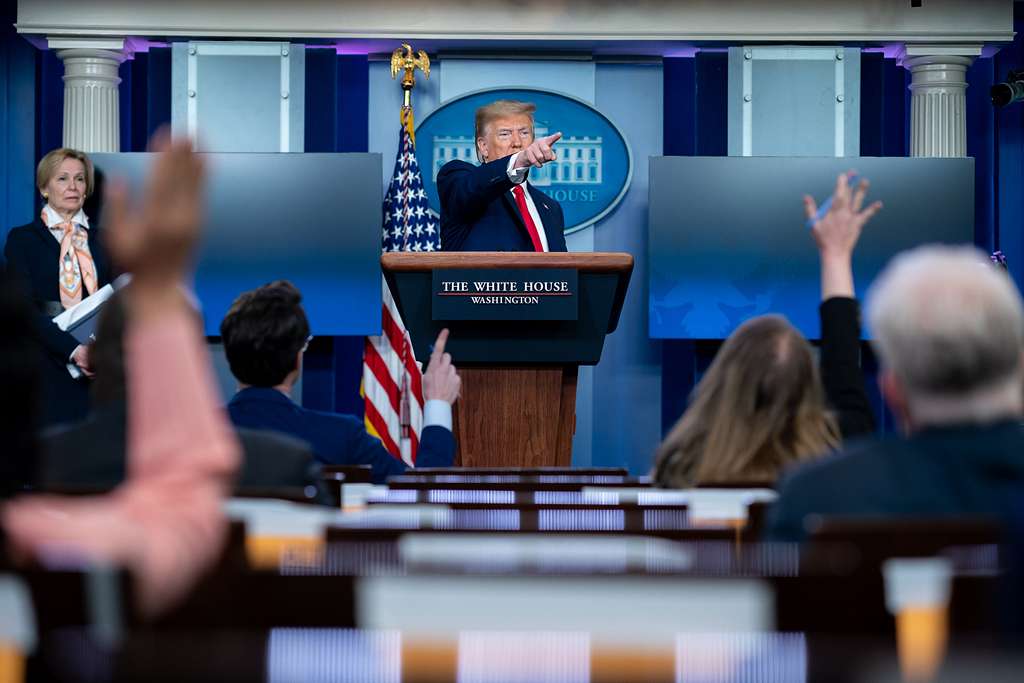
Photo credit: GetArchive.
Given this complicated context for the media sector, it is difficult to imagine that the landscape in 100 days will resemble the one Patterson described in his May 2017 study.
Nevertheless, many journalists have reaffirmed their commitment to pursuing their work “aggressively, fearlessly, fairly, with renewed rigour and creativity,” as former Los Angeles Times executive editor Kevin Merida told The Washington Post.
Pulitzer Prize-winning editor of The New Yorker David Remnick and Vox Media cofounder Matthew Yglesias recalled Trump’s first administration as a golden age for investigative journalism.
“If we’re going to go into a mode where we’re doing nothing but apologising and fainting at the feet of a false picture of reality because we think that’s what fairness demands, then we’re making an enormous mistake,” Remnick said.
A demonstration of fearlessness and fairness came from NBC News Meet the Press anchor Kristen Welker, the first journalist to interview Trump after his second electoral victory.
She challenged some of Trump’s inaccurate statements, prompting the president to blame her for asking tougher questions than those posed in interviews with “other people like Biden.”
“I’ve never interviewed President Biden,” Welker responded.








